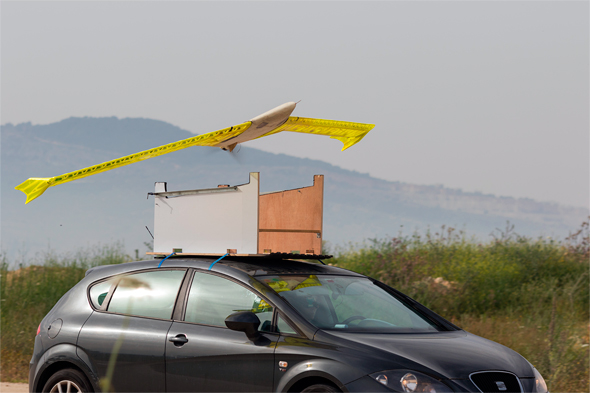A team of Israeli students have completed a maiden voyage of a 3D printed airplane. The big idea is to find a way to redesign aircraft of the future so they are more fuel efficient and less damaging to the planet.
Now all they need to do is scale up the model and partner up with the Swiss team that flies solar and they might have a match made in eco-heaven. Aviation needs greening, says moonshot seeker Geoffrey Lipman, founder of a new organization to scout for solutions in the industry.
The Israeli solution is not just a plane, but a test pad for testing new ideas: their A3TB – Active Aeroelastic Aircraft Testbed – is an experimental platform for studying phenomena related to wing flexibility and future flexible aircraft design that are eco friendly, says the team.
Designing modern aircraft includes numerous challenges, including the economic-environmental challenge of reducing fuel consumption and decreasing pollution. One of the solutions is designing lightweight aircraft structures with a large wingspan, thus reducing the drag forces.
Lengthening the wings inevitably leads to increased flexibility, which spurs structural tremors and sometimes even a loss of stability. Engineering solutions, such as control mechanisms, require complex multidisciplinary R&D that combine mathematical and numeric models with simulations in the lab, as well as test flights essential for verifying performance. During these flights, one must also take into account the risk of crashing.
For this reason, there is a need for inexpensive and safe testing platforms which can be “sacrificed” at relatively low cost in both money and project time. With the A3TB platform, optimal production design can be presented at a high speed and low cost. This platform therefore signals a breakthrough in the design of a flexible wing platform manufactured using a 3D printer.

For the past two years, two groups of students at the Faculty of Aerospace Engineering have been developing an aeroelastic tester of this sort – a light aircraft whose wings are long and flexible, and whose performance can be evaluated during flight so that special control mechanisms can be designed to improve its performance, response to wind gusts, and stability.
The A3TB platform weighs 10 kg, and its wingspan is 3 meters. It was designed by two groups of students under the guidance of Dr. Lucy Edery-Azulay and Professor Daniella Raveh, in collaboration with Israel’s Ministry of Defense.
The first test flight that was conducted on May 15 demonstrated that the platform is capable of flying straight and horizontal at sea level, including maneuvers. This flight is an important milestone in the platform’s continued development.

The team of students from the Technion in Israel. The big mission is a test pad to launch new, greener solutions for aviation.
Since it is a test airplane that is expected to crash at some point, these features make it possible to make many improvements without large investments. The group is currently working on an automatic control mechanism that will be installed on the second generation of the aircraft, A3TB-G2, in the next few months, and we hope to report on additional interesting results in the near future.

